(en francais au-dessous)
Sadly, one of the world’s great creative minds has left our planet far too soon – we mourn the passing of Robert Opron on March 29, 2021.
To many, Robert Opron is known for his automotive creations that marked the great era of Citroën in the 1960s and 1970s: the restylings of the 2CV and the DS after 1964, the Dyane, the Ami 8, the Wankel-M35, the CX, GS, and last but not least the outstanding SM coupé have set standards in all segments, through which Automobiles Citroën not only achieved great sales success at the “volume segment”: these vehicles also became milestones in the era now named the “Space Age”. All models are renowned design classics, and are indispensable in standard works on the history of the brand – and CX, GS and SM have seen significant increases in value in recent years like few other models of their time, and from their market segment.Opron was even involved in the Citroën 350 Bus and the C35, which appeared in 1974, before moving to Renault in 1974 after 12 years with Citroën: he left his mark on the Renault 9, 11, 25, Supercinq, Fuego and Rodeo 5, the Vesta prototype, Renault Espace and Express, and even the Alpine V6. The curved rear window (in French “hayon bulle”) will certainly go down in history as his special design feature, stylistically linking the SM, Fuego, R11, R25 and Alpine V6. From his work as an independent consultant from the 1990s, Ligier Optima, Ambra and Dué, among others, carry his genes.
2000 marked the end of his professional career, which he had begun as a designer in 1959 with the Simca Fulgur and ended in 1992 after 6 years at Fiat. He transported the creativity of his predecessor at Citroën, the legendary Flaminio Bertoni, into the new era and continued with his own signature. In his biography “Robert Opron – L’Automobile et L’Art”, which is well worth reading, Peter Pijlman lists 72 (!) published models of his style alone…! And not to mention the thousands of designs that never made it to the big stage.Born in 1932, Robert Opron has always remained a creative genius, even after he retired – or should we say “unretired”. Some of us have also been able to see him in recent years and meet him on one occasion or another. It is true that he was limited in his physical mobility – but his mind was always awake and always looking for the ultimate form of an automobile, marked between style, comfort, modernity and also usability: for him it was always a means of transportation for humans, who was at the center of the creative force, and not for the sake of pure design, and certainly not for any flashiness or even for the purpose of “posing”.
At many occasions, be it in France at the Retromobile classic vehicle show in Paris each February, in Germany at the occasion of the Technoclassica, or also in the Netherlands and other countries, we have been able to welcome him several times as an honorary guest of the exhibitor area of the Citroën clubs, and in 2012 he was also appointed as a honorary member in Germany. He was always accompanied by his wife Geneviève, who not only stood by his side, but also provided him with the space in which he could pursue his ideas further – freely following the motto: “Behind every great man is a strong woman”.
His path through the exposed vehicles was always different from that of many other visitors – he studied. He “read” the vehicles on display, the maquettes, the design studies: the silhouettes, the stylistic elements and lines, mostly the designs and blueprints that defined his era, right up to the modern-day models on display. He could be seen sensing the shapes, feeling and touching the surfaces. The view alone was not enough.
Perhaps an anecdote could be related, said Stephan Joest: “I remember accompanying him at one of the classic car shows. We were standing in front of an SM Opéra, i.e. the 4-door variant of the original 2-door car, which had been created by another independent coachbuilder. When I asked Robert to pose briefly for a photo in front of this car, he became quite indignant, forbidding even one shot to be taken.” His explanation was short but to the point – this car was not only stylistically not beautiful, but even a “design outrage” as he said, and he certainly did not want to be associated with it. His interpretation of the SM’s mission was realized in the best possible way in the production model!Robert Opron’s last public appearance dates from the Citroën brand’s 100th anniversary – the “Centenaire” in La Ferté-Vidame, 2019. In a joint interview with Patrick André and Stéphane Bonutto, friends to Robert and Geneviève, he provided his recollections about Flaminio Bertoni and explained his work as chief designer at Citroën as in no way a copy or continuation of Bertoni’s work, but rather the expression of his personal view of automotive design.
Stephan Joest said: “I last met Robert and Geneviève Opron just days before the pandemic arrived. We were having dinner afterwards in a small Paris suburb, together with Rosemarie Gumz, a close friend of theirs. Even though his health was declining a bit, his eyes often flashed mischievously, almost boyishly when discussing one creation or another with him, and it gave him the opportunity to give his view of things briefly, succinctly, and yet “au point”….”
Robert Opron was always a man of quiet tones, not a man for the big stage or the big words. His garage was latterly the world in which he spent most of his free time, crafting, sketching and studying there at a small table, and it was the world of pencil, paper, designing, thinking, and last but not least: creativity.
Stéphane, who is a.o. also the representative of “Assoziazione Flaminio Bertoni” in Germany, had also been a guest of the Opron couple in the winter of 2019/20, and had a similar experience: “After Robert came to the table from his early evening sleep, he admittedly said at first that his work at Citroën belonged to the distant past, and didn’t interest him that much anymore. At the mention of Flaminio Bertoni, however, he really blossomed, and peu-à-peu numerous memories from that time came to his mind. I was particularly struck by the simple beauty of his sentences – choice words and trains of thought that characterize the profound understander of aesthetics, form, and art. When I asked him what an ideal automobile shape looked like to him, he replied: “a shape that transmits power to the wheels in a balanced way”.
Unfortunately, the pandemic has caught up with him, too. Like so many these days, he has now arrived in another world. We wish that he is at least as creative there as he is on this one. Because that’s how we want to meet him there one day…!
Our deepest condolences are with his wife and his children, grandchildren and greatgrandchildren, and all other members of his family.
Stephane Bonutto and Stephan Joest, and the Board of the ACI and all ACI Delegates worldwide.
NB – We’d like to thank Mme. Opron for her approval to publish these lines. Photos (C) Stephan Joest, ACI.
PS: We are sure that a number of you also have met Robert Opron, got inspired by his designs or are in any other ways having personal memories in relation to him. In the comments section below we have opened the space so you can leave your condolences. Thank you.
—–
Le Décès de Robert Opron
Un des grands créateurs de notre temps vient de nous quitter bien trop tôt – c’est avec une profonde tristesse que nous vous faisons part du décès de Robert Opron survenu le 29 mars 2021.
Qui ne connait pas Robert Opron pour ses créations automobiles, qui ont marqué la grande époque de Citroën dans les années 1960-1970 : à commencer par les restylages de la 2CV et la DS après 1964, suivis de la Dyane, l’Ami 8, la M35 à moteur Wankel, la CX, la GS et, non des moindres, le phénoménal coupé SM. Non seulement ces automobiles ont été des succès commerciaux pour Citroën, elles sont de surcroit des jalons historiques d’une époque appelé aujourd’hui « l’âge de la conquête de l’espace ». Tous ces modèles sont devenus des classiques de style et font partie intégrante des standards de la Marque – les CX, GS et SM ont vu durant ces dernières années leur valeur augmenter comme aucun autre modèle de leurs catégories respectives. Robert Opron fut même impliqué dans la genèse des Citroën 350 bus et C35, avant de quitter Citroën en 1974 après 12 années d’engagement envers la Marque, pour entrer chez Renault. R9, R11, R25, Supercinq, Fuego et Rodeo 5, prototype Vesta, Espace et Express, sans oublier l’Alpine V6 portent son empreinte. Le « hayon bulle » entrera certainement dans l’histoire de l’automobile comme la signature stylistique de Robert Opron et réunit SM, Fuego, R11, R25 et Alpine V6 autour d’un trait commun. Les Ligier Optima, Ambra et Dué portent les gènes de son travail comme consultant indépendant dans les années 1990. En 2000, Robert Opron mit un terme à une carrière professionnelle commencée en 1959 avec la Simca Fulgur et conclue chez un constructeur en 1992 après 6 années passées chez Fiat. Il transporta la créativité de son prédécesseur chez Citroën, le légendaire Flaminio Bertoni, dans une nouvelle ère, avec son style propre. Dans son excellent ouvrage biographique appelé à juste titre « Robert Opron – L’Automobile et L’Art », Peter Pijlman ne recense pas moins de 72 modèles automobiles porteurs de son trait de crayon !
Né en 1932, Robert Opron a été durant toute sa carrière un génie créatif, et le fut également après son départ en retraîte, que l’on devrait d’ailleurs plutôt qualifier de départ vers d’autres activités. Nombre d’entre nous ont pu le voir ou le rencontrer personnellement lors de l’une ou l’autre occasion. Bien que restreint dans sa mobilité physique ces derniers temps, son esprit était toujours alerte et à la recherche de la forme ultimative d’une automobile empreinte de style, confort, modernité et utilité : la voiture fut toujours pour lui, non pas un pur objet de design et encore moins un faire-valoir tapageur, mais un moyen de transport pour un être humain situé au centre d’une force créatrice.
Nous avons eu la joie d’accueillir Robert Opron à plusieurs evenements comme la Retromobile à Paris, mais aussi dans autres pays comme a pays-bas ou en Allemagnesur la Technoclassica, ou il a recu en 2012 son titre de membre d’honneur. Robert était toujours accompagné de son épouse Geneviève, qui non seulement l’épaulait, mais lui laissait aussi son espace créatif suivant le proverbe “Derrière chaque grand homme se trouve une non moins grande femme…!” Robert Opron parcourait les expositions de façon différente de celle des autres visiteurs. Il “lisait” les voitures exposées, les maquettes, les études de design : leurs silhouettes, leurs éléments de style et leurs lignes, surtout en ce qui concerne les modèles qui marquèrent leur temps. On pouvait le voir ressentir les formes et appréhender les surfaces. Le regard seul ne lui suffisait pas.
Relatons ici une anecdote, dit Stephan Joest de l’ACI: “Je me rappelle avoir accompagné Robert Opron sur un salon de voitures classiques. Nous étions devant une SM Opéra, donc une variante à 4 portes du coupé original émanant d’un carrossier indépendant. Alors que je le priais de poser pour une photo devant la voiture, il devint visiblement gêné et refusa la moindre prise de vue. Son explication fut brève mais claire – il ne trouvait pas la voiture belle d’un point de vue du style, mais la qualifiait de surcroît de sacrilège et refusait d’y être associé. Son interprétation de la SM était réalisée de manière inaltérable dans le modèle de série!”
La dernière apparition publique de Robert Opron date du Centenaire Citroën à La Ferté-Vidame en 2019. Au cours d’une interview commune avec Patrick André et Stéphane Bonutto, deux amis de Geneviève et Robert Opron, il livra au public ses souvenirs sur Flaminio Bertoni et expliqua son travail en tant que directeur du style chez Citroën comme n’étant en aucun cas une copie ou une continuation du travail de Bertoni, mais bien comme son expression personnelle du design automobile.
Stephan Joest dit: “J’ai eu la chance de revoir Robert Opron peu avant le début de la pandémie. Nous nous retrouvâmes pour un dîner dans une petite ville de la région parisienne, avec Geneviève et Rosemarie Gumz, une amie des plus proches du couple. Nonobstant sa santé quelque peu déclinante, ses yeux devenaient malicieux voire juvéniles lorsque nous parlions de l’une ou l’autre création et que l’occasion se présentait pour lui de livrer son opinion, de manière concise mais toujours “au point”.
Robert Opron était un homme au verbe discret et non un homme de scène ou un tribun. Ces derniers temps, son garage était l’univers dans lequel il passait la plupart de son temps libre à dessiner ou étudier, c’était un monde de crayons, papiers, croquis, pensées et aussi surtout : de créativité.
Stéphane Bonutto, qui est aussi le délégué de l “Assoziazione Flaminio Bertoni” en Allemagne, eut également la joie de passer une soirée chez le couple Opron durant l’hiver 2019-2020 et fit une expérience comparable : « Après avoir fini son sommeil de début de soirée et être venu nous rejoindre à table, il commença par me déclarer que son travail chez Citroën appartenait au passé et ne l’intéressait désormais plus vraiment. L’évocation de Flaminio Bertoni le fit retrouver une énergie grandissante, et de nombreux souvenirs de cette époque lui revinrent peu à peu à l’esprit. Je fus particulièrement impressionné par la beauté de son élocution – des pensées et des mots choisis qui révèlent un sens profond de l’esthétique, de la forme et de l’art. A ma question sur la forme idéale d’une automobile, il me formula cette réponse : « une forme équilibrée, dans la transmission de la puissance au roues. »
Malheureusement la pandémie l’a emporté lui aussi. Comme bien d’autres par ces temps-ci, il est désormais arrivé dans un autre monde. Nous souhaitons – et en sommes convaincus – qu’il y soit au moins aussi créatif qu’il le fut dans ce monde-ci. C’est dans cet esprit que nous voulons l’y retrouver un jour…!
Nous adressons toutes nos condoléances et exprimons notre amitié la plus sincère à G.O., leurs enfants, petits-enfants et arrière-petits-enfants.
Stephan Joest et Stéphane Bonutto,
et le bureau de l’ACI, et les délégues de l’ACI du monde.
PS: Mme Opron nous a demandé de publier ce texte, qui a été convenu avec elle, sur la page d’accueil de l’ACI – nous avons été heureux d’obtempérer. Photos (C) Stephan Joest, ACI.
PPS: Nous sommes sûrs qu’un certain nombre d’entre vous ont rencontré Robert Opron, ont été inspirés par ses créations ou ont des souvenirs personnels en relation avec lui. Dans la section des commentaires ci-dessous, nous avons ouvert l’espace pour que vous puissiez laisser vos memoires et les condoléances. Merci.
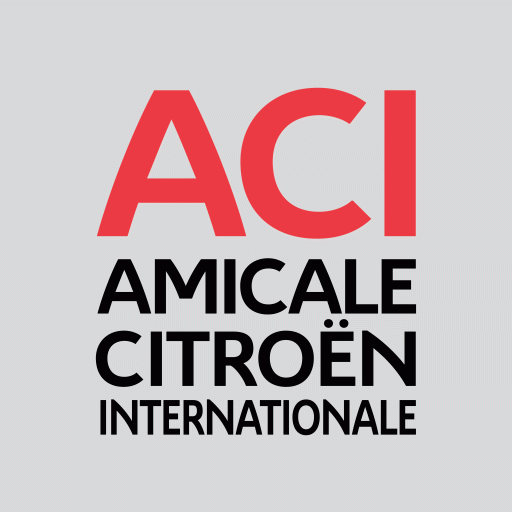
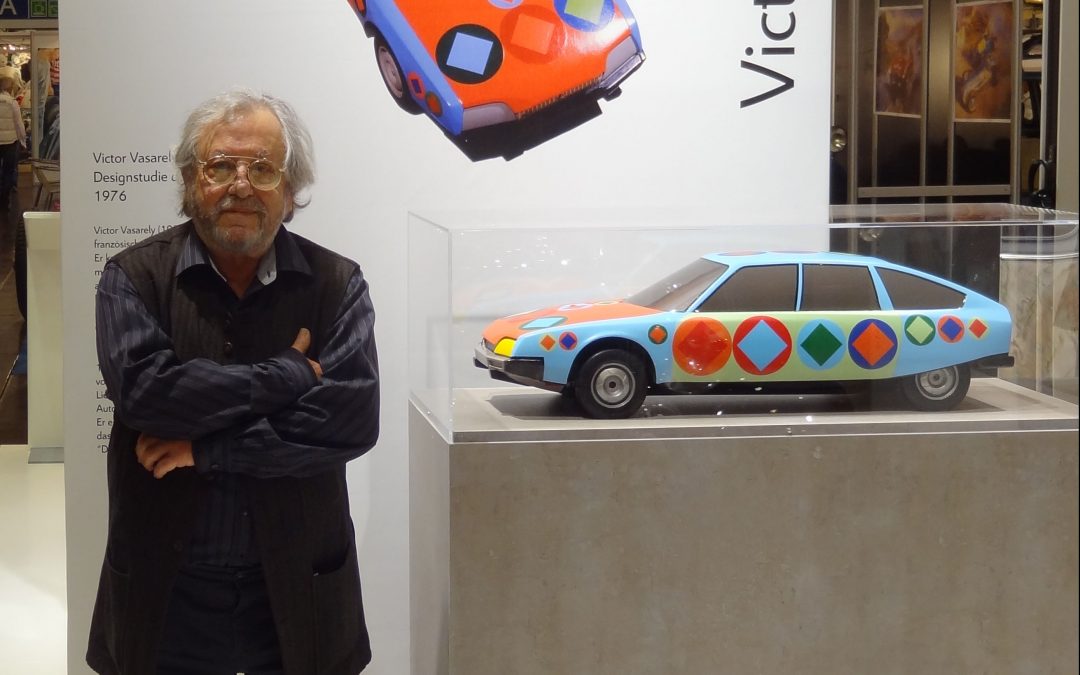
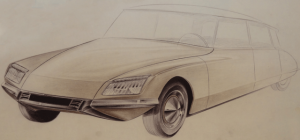
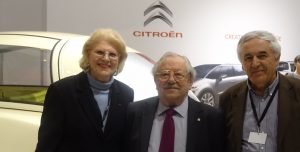
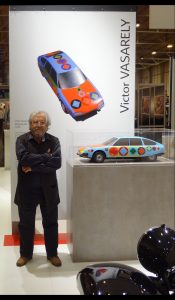
In tiefer Trauer und nach über 50 Jahren Dankbarkeit für sein WEGWEISENDES Design-Wirken aus den 60er bis in die Mitte der 70er Jahre für Citroën, erlebe ich die bedrückende Nachricht auch in lebendigem Rückblick auf die Citroën-Ikonen, die er für die Straßen der Welt geformt hat, wo sie durch Diejenigen, die sie als Oldtimer fahren und pflegen, über seinen Tod hinaus weiterhin seinen Genius „ein roûte“ verbreiten.
Besonders war das immer beeindruckende Erlebnis über mehrere Jahre hinweg, wenn Robert Opron der clubübergreifenden CITROËN-Straße auf der großen Techno-Classica-Frühjahrsmesse in Essen / Deutschland die immer auch sehr menschliche Freude seiner persönlichen Besuche gemacht hat, die dankbar genossen wurden. Sie werden nun umso stärker in leuchtender Erinnerung bleiben..
R.I.P.
This Covid 19 pandemic has taken a lot from us. Relatives, friends, public and prominent men and women. Today we have to mourn the departure of the prominent Robert Opron. Our heartfelt greetings to his family and to the Citroën world that will always remember him. From Chili, Patrick Cardemil director Citroamigos Club
Bien que nous n’ayons pas connu personnellement M. Robert Opron, les belles paroles de M. Stephan Joest à propos de Robert Opron nous touchent. Nous sommes arrivés à entrevoir ce homme spéciale en 2019 à l’occasion du centenaire à Ferté-Vidame. Nous aimerions partager nos condoléances à sa famille et à ses amis ici. R.I.P. Robert Opron.
Ive been trying to find anything about this very sad new .nothing on any uk motoring website
He was a great man .we will all miss him
Technoclassica 2010: bin zu erstenmal Robert Opron begegnet. Er hatte kein Feuer und ich keine Zigaretten mehr. Also haben wir gemeinsam eine von seinen Gitanes geraucht und uns nett mit Händen und Füßen unterhalten, so gut es mit unseren Sprachbarrieren eben ging. Diese erste Begegnung mit ihm werde ich niemals vergessen.
Ich bedanke mich ehrfurchtsvoll bei diesem Design-Künsler für die ganzen stilvollen Creationen, die er uns und auch folgenden Generationen geschenkt und somit hinterlassen hat. Mein Beileid gilt der ganzen Familie und besonders Genevieve.
I’m very sorry about the loss of Mr. Robert Opron!
As owner of a Citroën SM and member of the Citroën-Maserati-Club Germany (founded 1979) I am a fan of Mr. Oprons ingenious design language and inspiration for modern automotive shapes. He somehow formed my taste how a car should look like since today. In 2014 I had the oprotunity to meet him and his wife at the Techno Classica in Essen. He signed my car there and I found out that this couple are very kind persons, even with my lack of the french language. Myself and of course all our club members will always remember him and our sympathy and thoughts are with his wife and family.